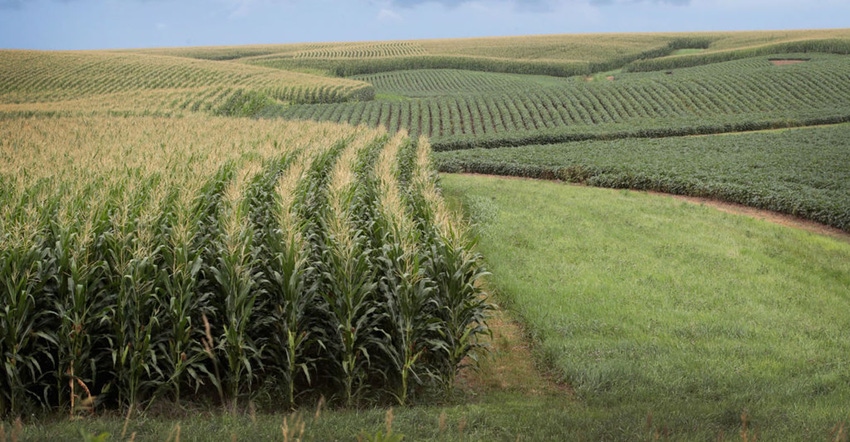November 6, 2019

The RaboResearch Food & Agribusiness group at Rabo AgriFinance underlines continuing long-term challenges for U.S. producers in its new series of 10-year outlooks for corn, soybeans and wheat.
Ending stocks will continue to be an issue for the crops, according to the outlooks, as the long-term trends for yield increases make up the difference in lower acre numbers while demand remains flat. These stocks will keep a lid on commodity prices.
“The current challenges to profitability will likely and unfortunately continue for row crop producers. U.S. farmers will need to look at being low-cost producers if their long-term plans include growing any of these crops,” said lead author Stephen Nicholson. “Crop diversity will continue to be a good strategy for capturing any upside activity in prices and keeping cost of production down. And opportunities for specialty premiums such as food-grade, high-premium wheat or organic grain will continue to be attractive for increasing revenues.”
A major supply shock, from another major weather year for example, could cause large price and acre reactions. Those reactions would likely last only a year or two before acres and prices return to trend.
Soybeans
“As expected, of all crops, the trade war has had the largest impact on soybean prices,” said Nicholson, senior grain and oilseed analyst with Rabo AgriFinance. “The trade war alone has reduced the average national price paid to soybean farmers by $1.00 to $1.50 per bushel. The ASF outbreaks add another 50 cents to a dollar to the reduction.”
Even if the U.S. and Chinese governments resolve their trade dispute, RaboResearch expects demand to drag due to the lingering effects of African swine fever in China and Southeast Asia. Should the number of barge loads to China continue to go adrift over the next decade, RaboResearch analysis shows a 75% probability that farmgate soybean prices will remain under $9.60 per bushel.
Corn and wheat
The trade war with China and ASF do not have a major effect on the corn and wheat outlooks; instead, “oversupply, flat domestic use, no or little growth in exports, and increased global trade competition” pile up, according to RaboResearch reports.
Given no changes to ethanol policy, the outlooks call for animal feed to overtake ethanol as the demand driver for corn in 2026/27.
“Corn farmers could expect local markets, for example large livestock operations, to become their better pricing opportunity versus the export market,” Nicholson said.
Source: Rabo AgFinance, which is solely responsible for the information provided and is wholly owned by the source. Informa Business Media and all its subsidiaries are not responsible for any of the content contained in this information asset.
You May Also Like




